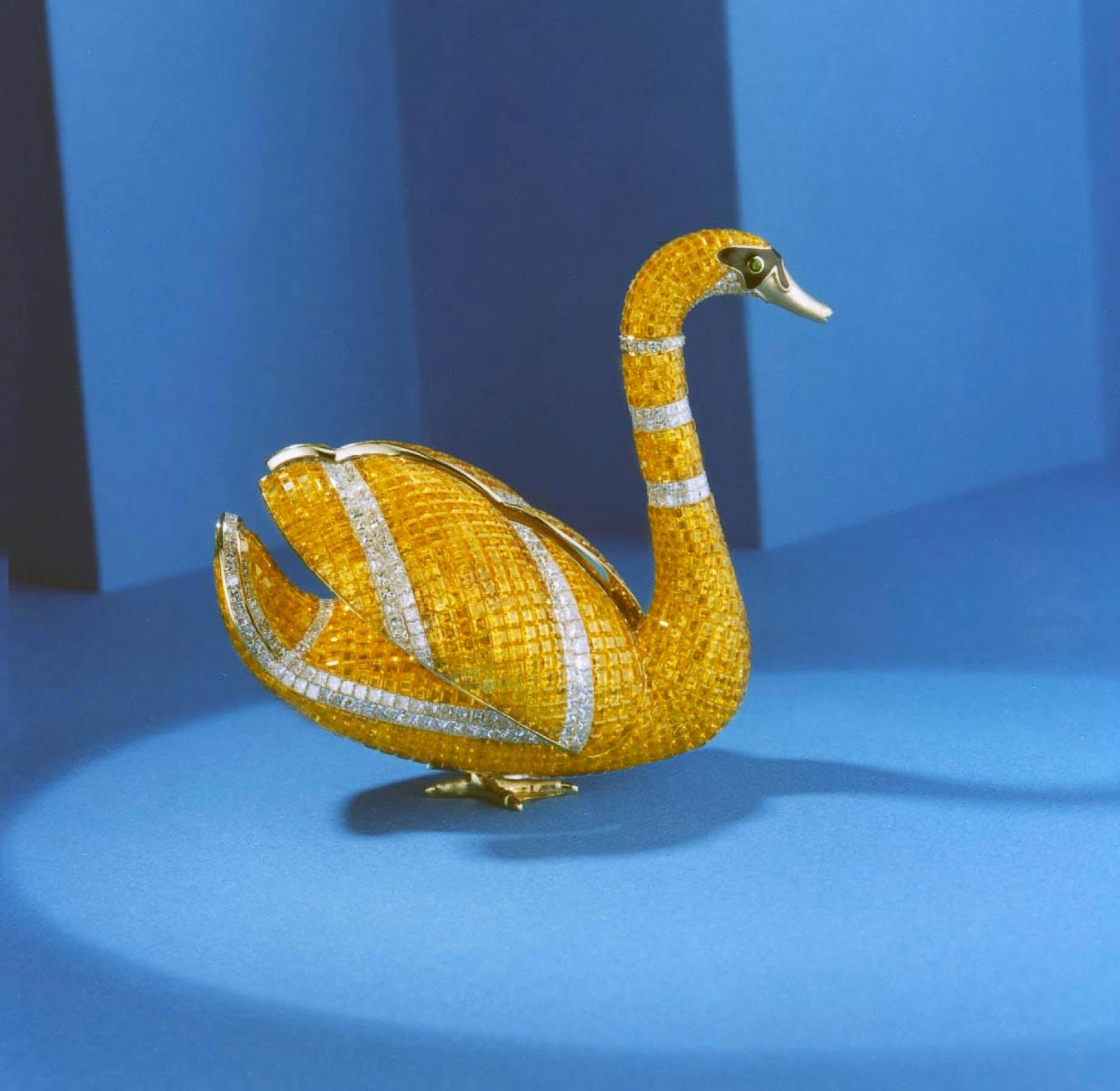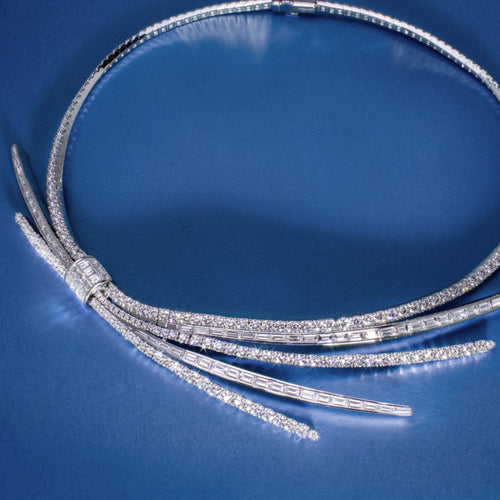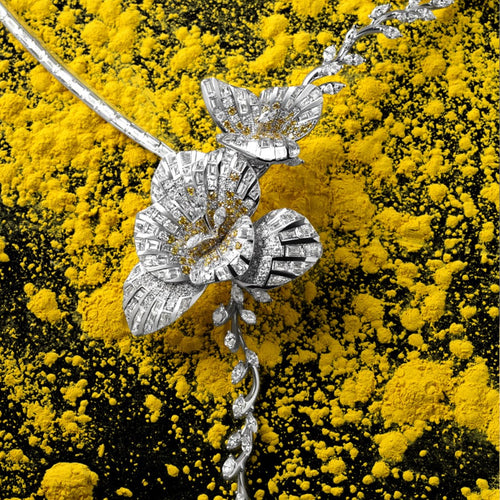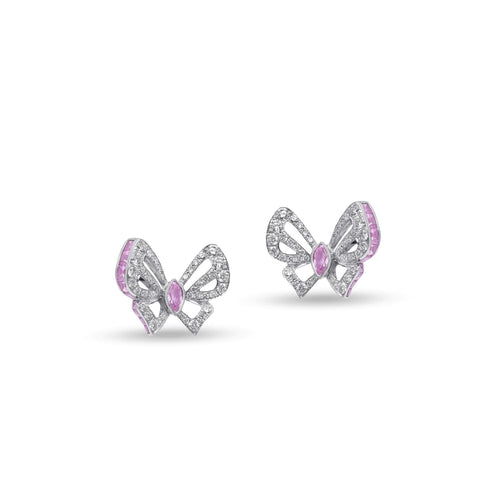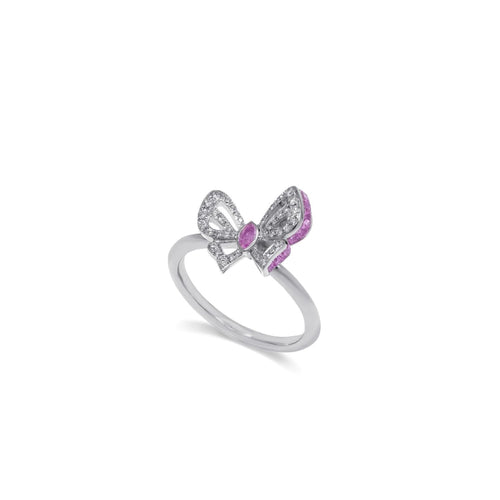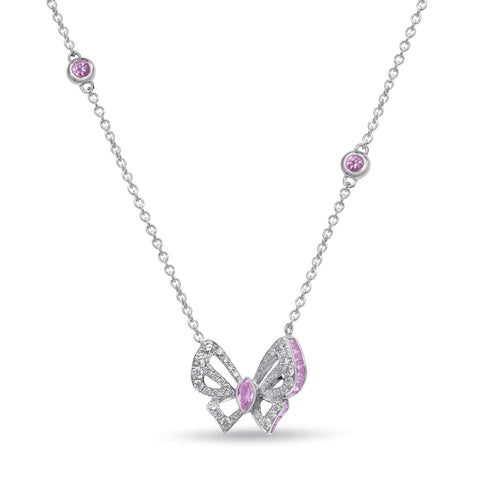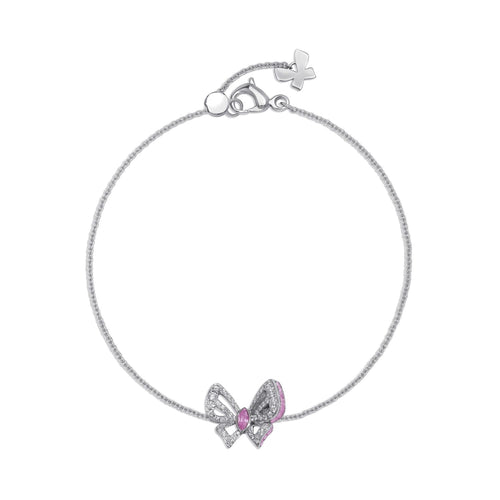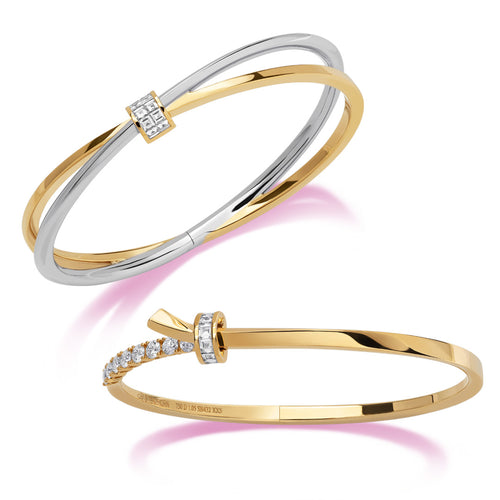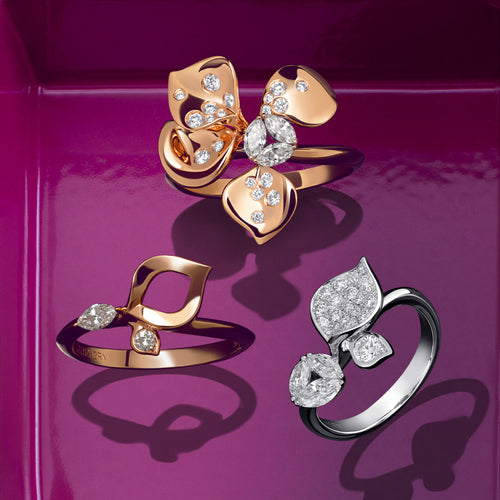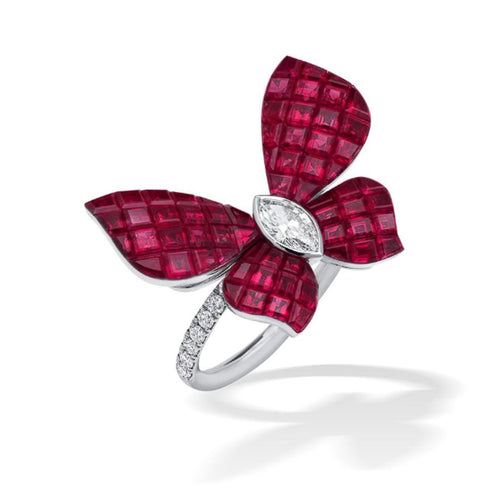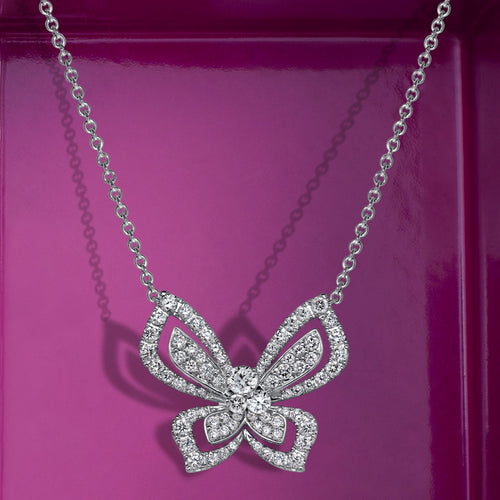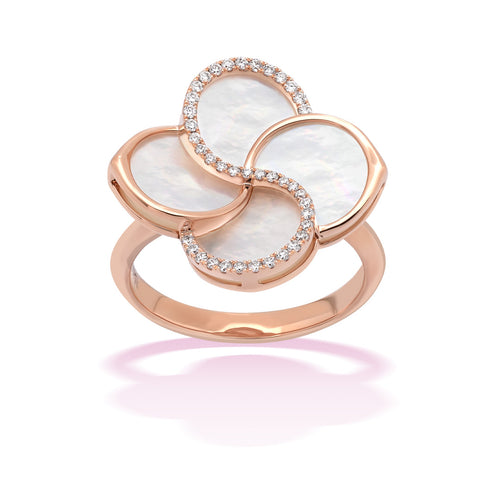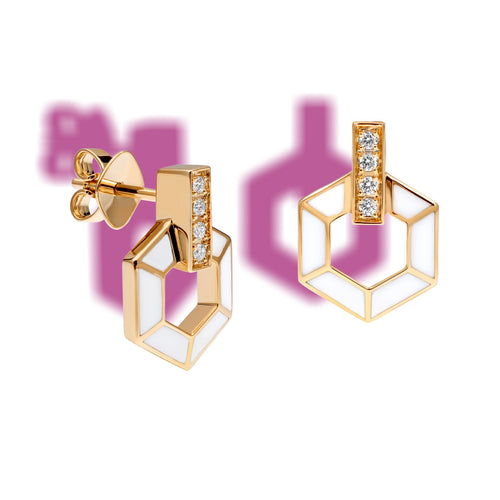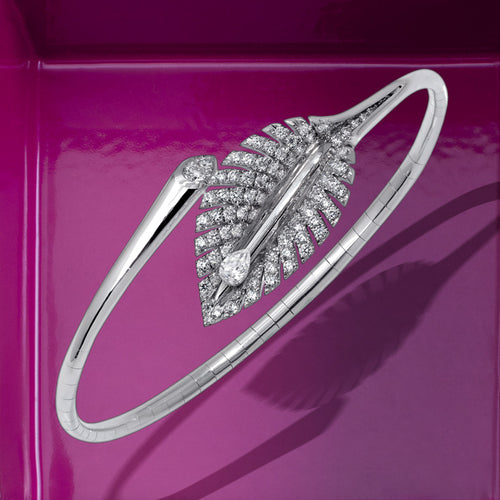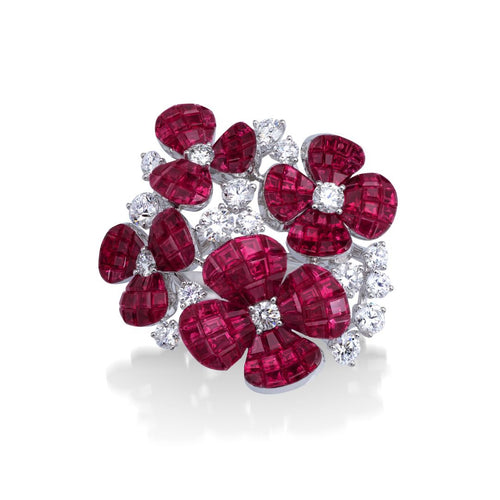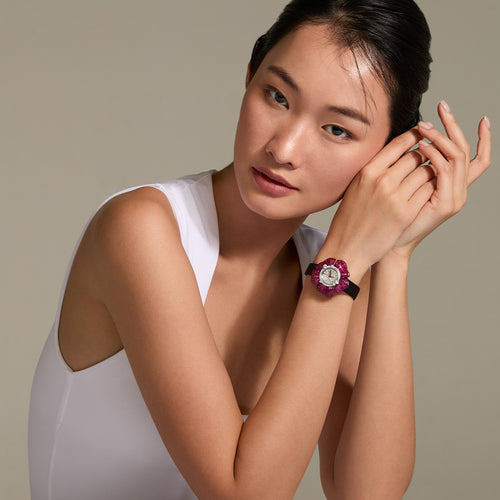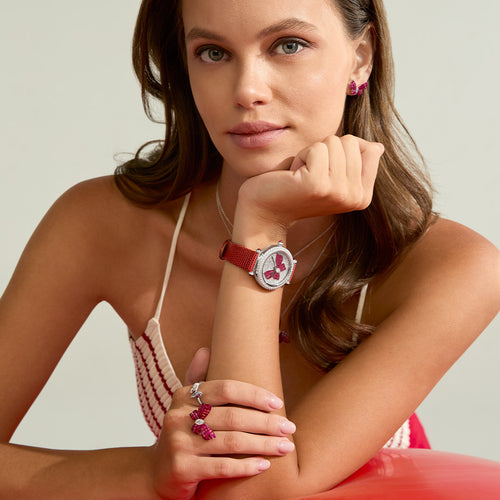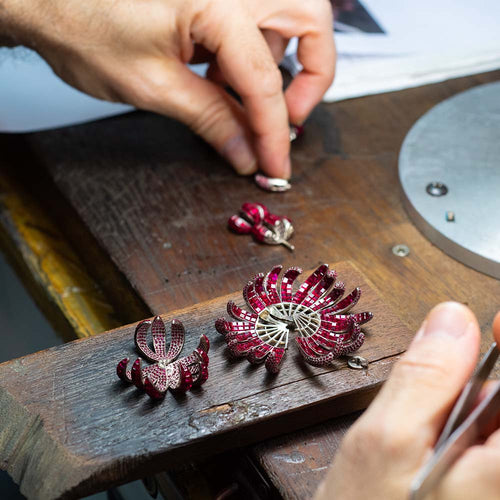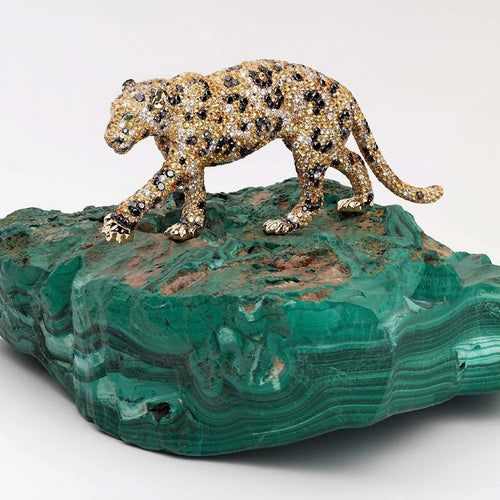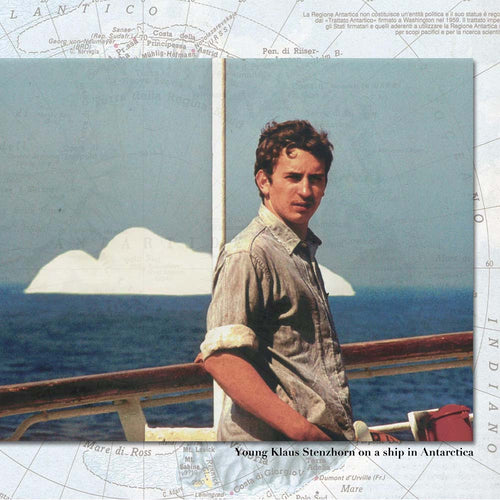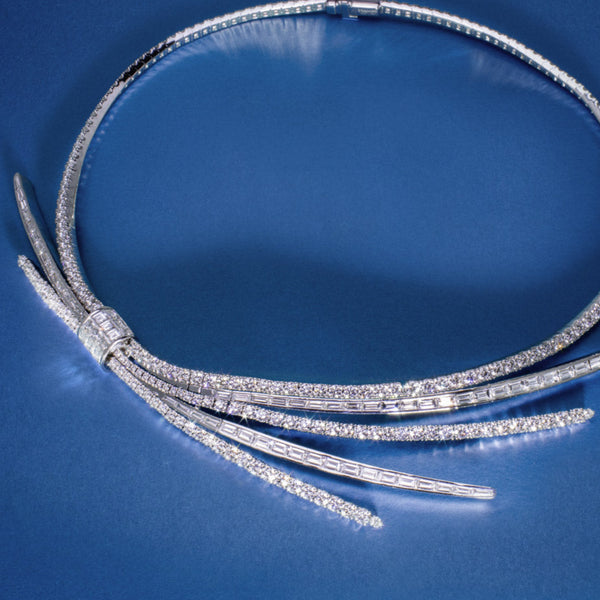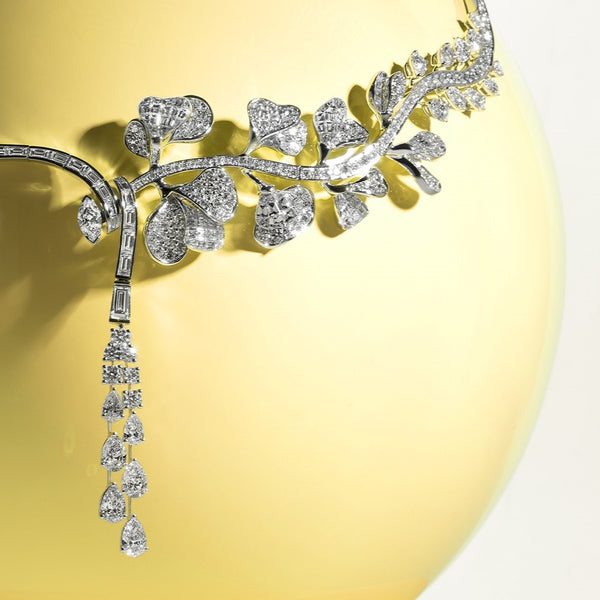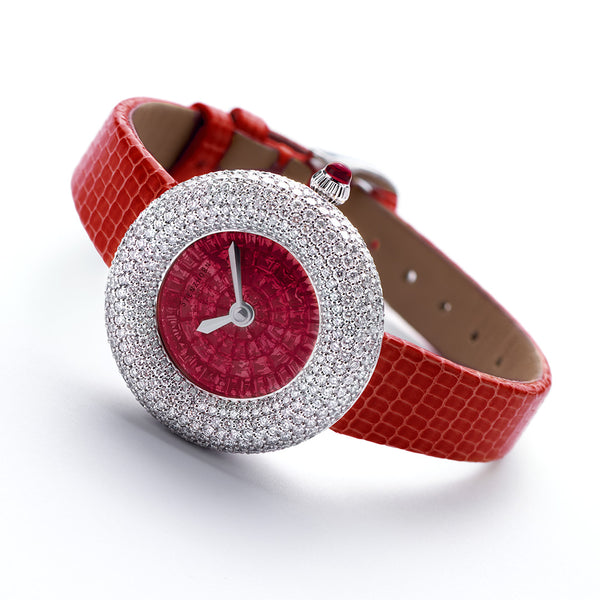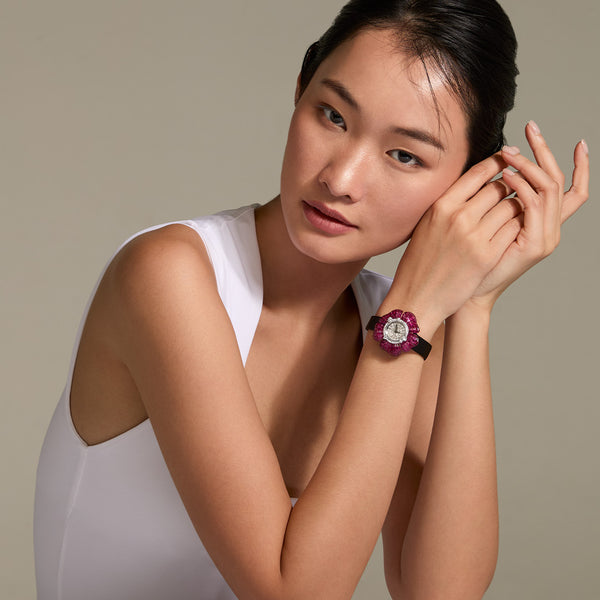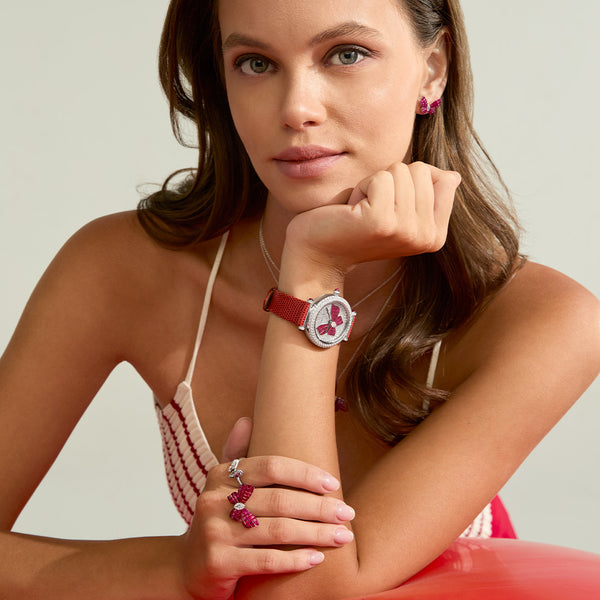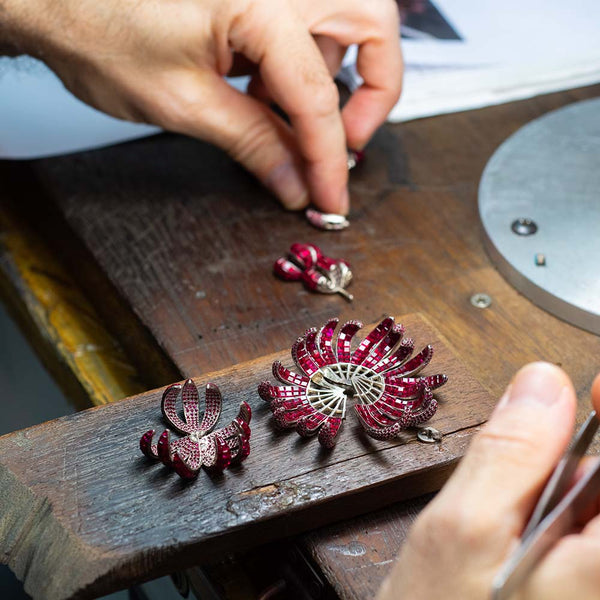Jewellery Objects
Introduced more than two decades ago, our jewellery objects are at the heart of our history and heritage, giving life to the aspects of the natural world that continue to inspire our “Beauty of Nature” themed collection.
Inspired by Aladdin, one of the most enduring tales from One Thousand and One Nights, Klaus had a vision of carving fairy-tales into jewels.
“Looking into the sparkling, colourful facets of gemstones set into precious jewels, awoke in me the feeling of being inside a fairy-tale. Jewellery has the power to walk your imagination to magical places, existent or wonderfully imaginary.” - Klaus Stenzhorn
Designed and crafted in 1994, The Flying Carpet is one of the most memorable and magical of our precious objects. More than 500 hours of intense work were needed for its creation.
The unique movement of The Flying Carpet was achieved by applying multiple rows of micro-crankshafts and pistons to roll below the surface. The rippling rug, as soft as silk, was composed of 1,500 colour stones – from emeralds, rubies, sapphires and diamonds – set in our hand-crafted Second Skin technique to allow for total flexibility within the piece.
At the centre of the creation, Aladdin was presented with a unique south sea pearl, a diamond turban hat and a jacket of invisible- set blue sapphires.
Decorative inlays of Mother of Pearl is used to represent the sky beneath the flying carpet, delicately cut in the shape of clouds.
At the base of the piece, a tower is formed by three layers of intense blue Lapis Lazuli, precisely cut with a water jet system.

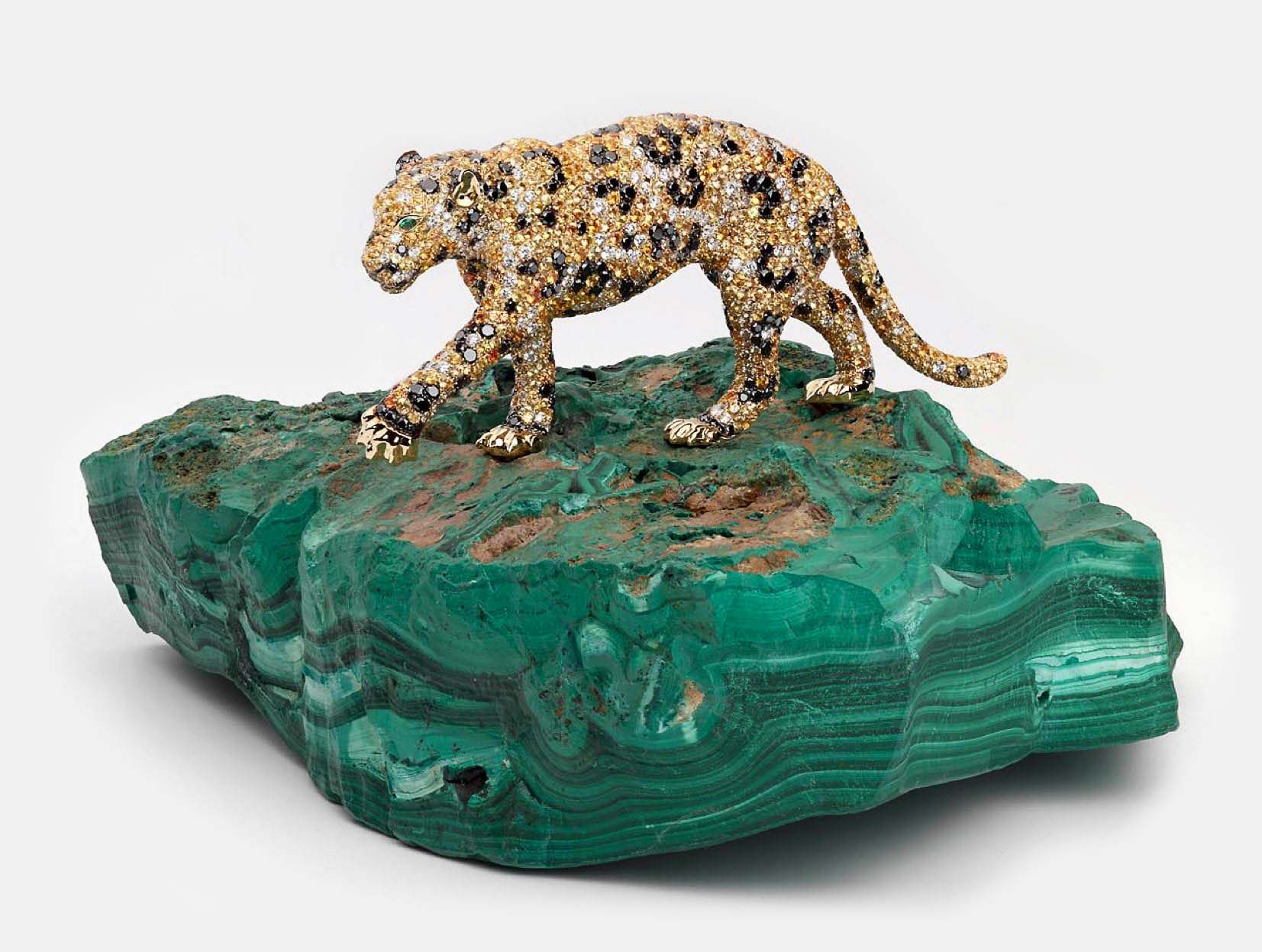
The first in a series of Savanna Wild Life objects, The Walking Leopard was unveiled at Baselworld Fair in 2004.
The leopard has always been regarded as an animal that symbolizes nobility, honour and courage. In very ancient times, the king that ruled over African tribes was named “The Leopard”, and embodied the creature’s virtues.
The feline’s eyesight is among the keenest of all creatures, enabling relentless hunts from dusk ‘til dawn, and granting the ability to see what others cannot. This characteristic ensured the leopard was also known as ‘The Prince of Darkness’.
The model of the feline was completely handmade from wax to capture the moment before its prey is hunted. Striding above a large malachite base, the dignified animal in all the beauty of its form is set with yellow sapphires, emerald eyes, and black and white diamond spots.
The malachite base originates from Africa, and was originally part of our founder’s gem and minerals collection. Klaus Stenzhorn decided to leave the botryoidal surface untouched, to better represent the ground where the animal walks before it runs.
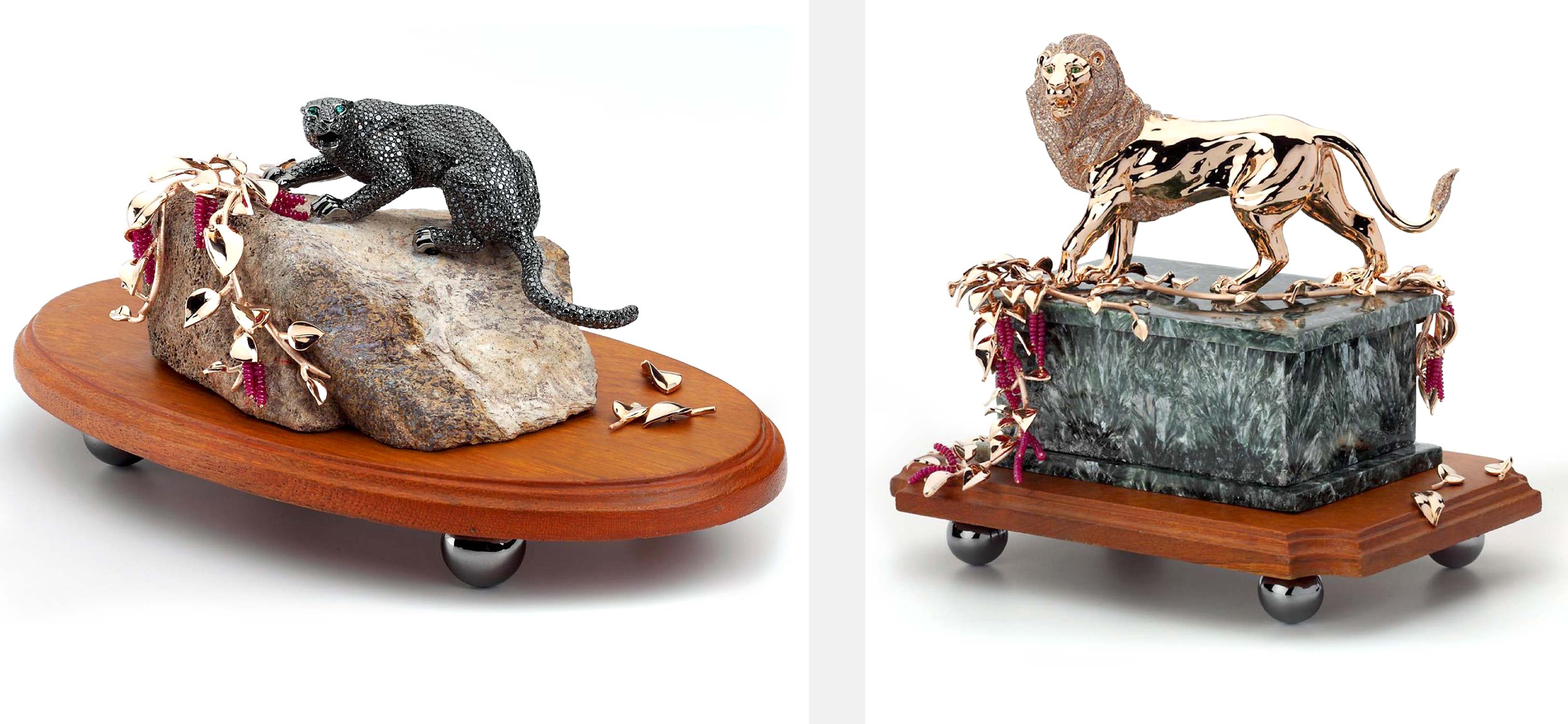
The Lion & The Black Panther
Succeeding ‘The Walking Leopard’, The Lion & The Black Panther were presented together as an antagonist duo, in occasion of Baselworld Jewellery Fair 2006.
Notorious symbols of light and shadow, the creatures featured extremely rare details that make them unique, and unrepeatable pieces. Both models were meticulously handcrafted from wax, and later set with more than 2,000 micro-pave diamond while emeralds were used to create piercing eyes.
Standing fiercely like a mighty king, the lion’s yellow gold and pave-set diamonds body was placed on a rare piece of seraphinite stone, cut into the shape of an altar, in celebration of the regal creature. The legendary ruler known to all as the King Of Beasts, the lion represents the attributes of royalty, ferocity, courage and wisdom.
In ancient Egyptian culture, its symbolism conveyed wealth, represented by the solar energy of gold. It was believed that the lion was the supreme animal, embodying the power of the sun on earth.
Preannounced antagonist of the light, the black panther embodies the shimmering energy of the moon. Master of disguise, the feline reveals its true identity in the shadows, masquerading as anything it wishes. We captured the nocturnal creature in the moment before attack, staring at the viewer with emerald green eyes.
The panther, crouches above a prehistoric mammoth fossil excavated in Russia, was the result of one of our most exciting quests for rare stones and materials to emphasize the uniqueness of our objects.
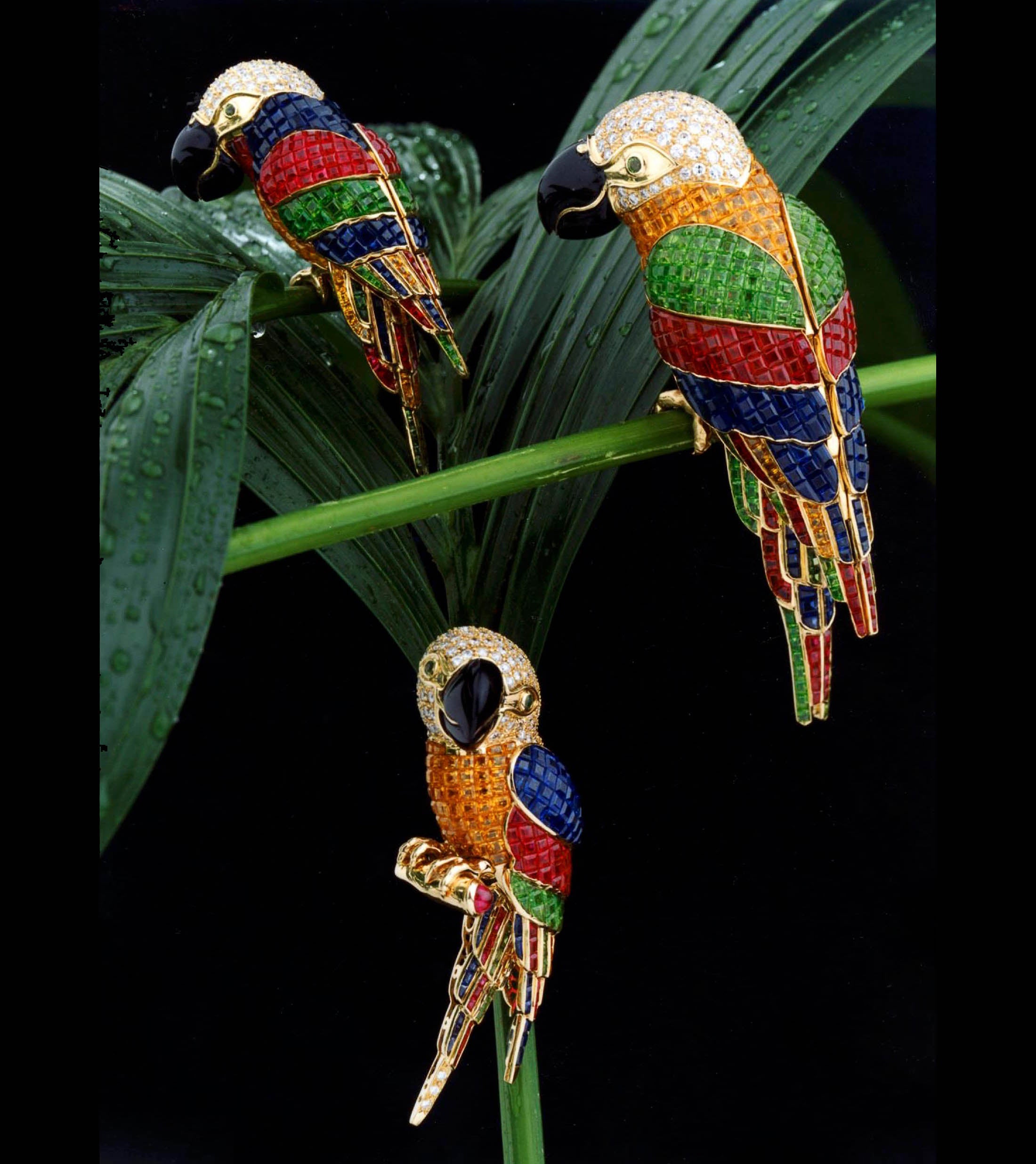
Traveling through the Amazon River, Klaus discovered one of the most picturesque creatures populating South America: the Scarlet Macaw. It is said that parrots are creatures of exotic beauty, enhanced with elegance, and surrounded by ancient mystery.
This playful and colourful parrot trio was introduced in 1993, the first of the invisibly set objects, which – mastered over 40 years – became the House’s signature technique.
Presented in different sizes, the bright-coloured creatures are invisibly-set with the most vivid of the colour stones: tsavorites, rubies, and blue and orange sapphires.
The trio’s unique complexity was the assembly of their vibrant feathers. As a known perfectionist, Klaus wanted to faithfully recreate the bird’s real plumage.
To make this possible, each feather was singularly attached to a central gold structure, and secured with long pins to ensure a three-dimensional result.
The bird’s spiritual origins, narrated in numerous tribal legends, not only inspired the creation of these jewelled birds, but motivated Klaus to learn more about the wild fauna inhabiting the Amazon’s green expanses. And so it was that nature’s wild side came to life within Stenzhorn’s collections.
A symbol of the defining topic of this century, polar bears are one of the species most endangered by climate change. During his journey to the North Pole, young Klaus was deeply fascinated by the artic world.
In the winter of 2007, he encountered an old shipmate and was extremely touched by his words.
The arctic world had changed, he told Klaus. Ice shelves that they could not cross were today navigable, and he had once found a polar bear dead in the water. These creatures are some of nature’s greatest swimmers, able to stay in pursuit for more than one hundred kilometres before needing to rest. The sailor was shocked to discover that the starving polar bear had died while trying to reach the next, elusive piece of ice.
This precious object is a tribute to the polar bear’s plight, in the form of a scream for help from an exhausted bear mother and her two pups, adrift on ice. The creatures, handcrafted in white gold and set in micro-pavé white diamonds, were presented resting on a huge piece of carved matte Rock crystal, engraved with a poignant inscription on the front, “HELP”.
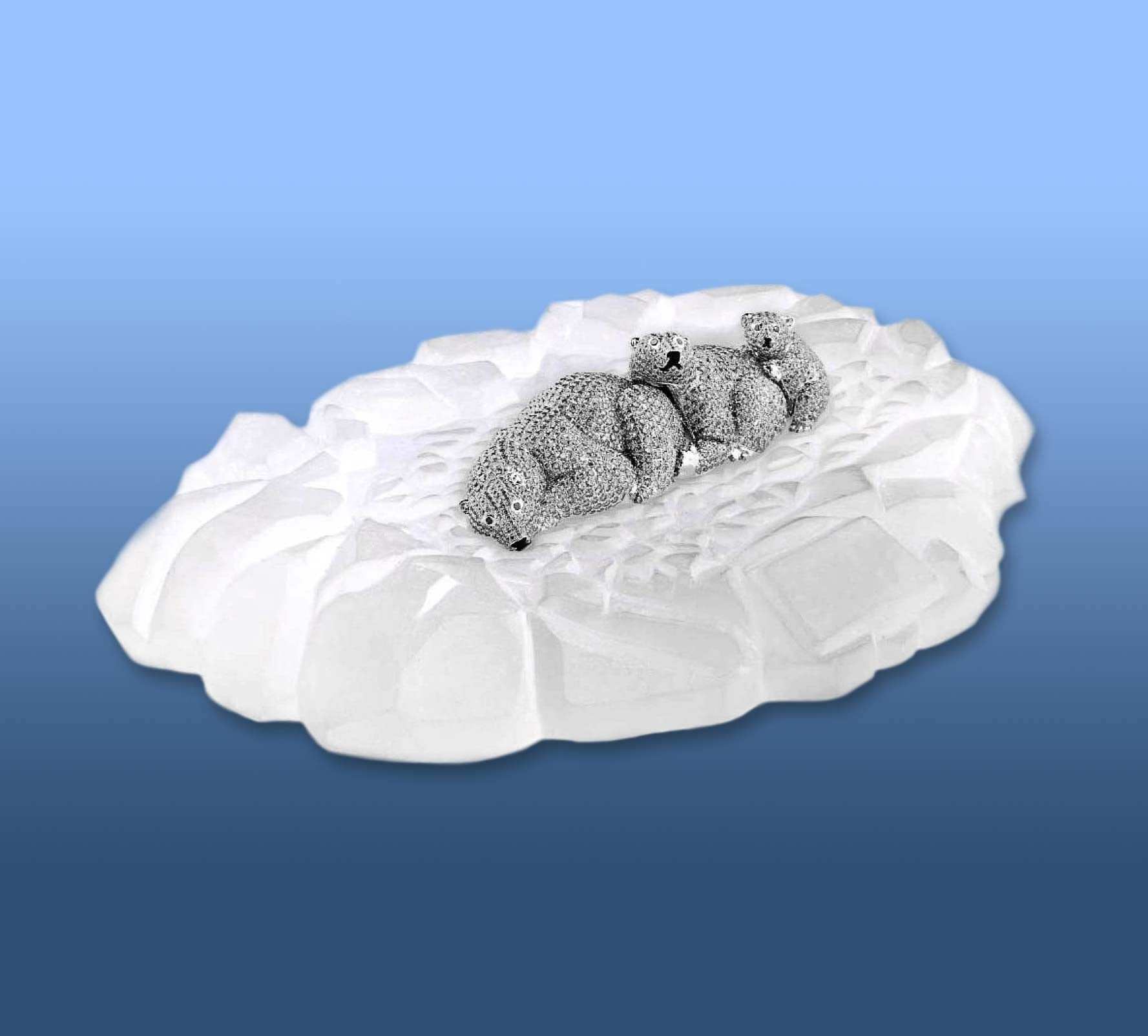
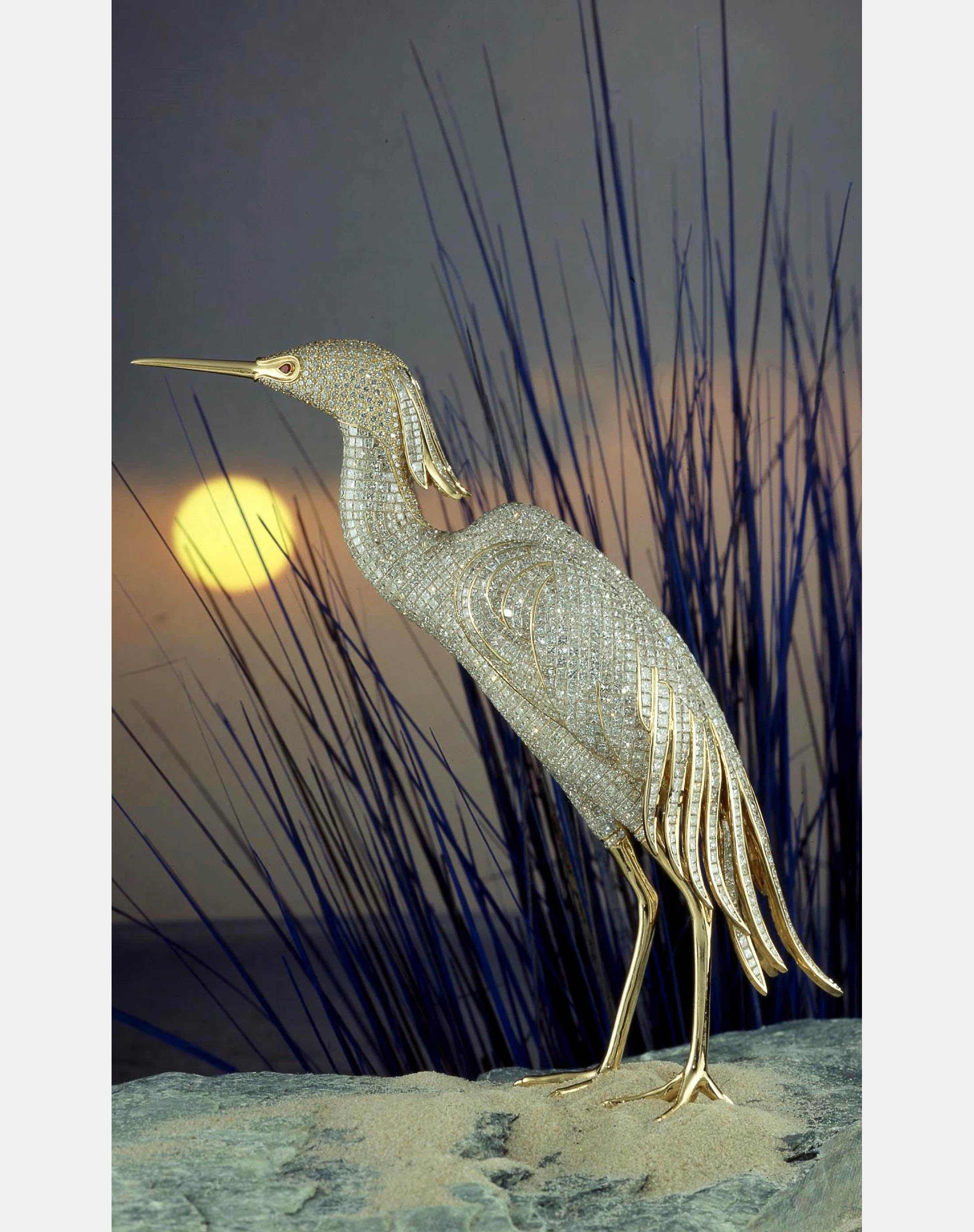
Presented in 1989, this majestic creature was the second of the invisibly set aquatic bird objects, inspired by the exotic Caribbean Great White Heron.
During the age of antiquity, they were believed to be lucky charms, especially for people bound to waters. Sailors, in fact, believed that a heron brought fortune and safe passage. Being a sailor himself, Klaus chose to present the heron as a celebration of his life at sea, and as a dedication to the friendships cultivated through those years.
Herons are known to be strategic hunters, but even though they travel in groups, they always hunt alone. Never going near their prey, they wait for them in ambush and are a great symbol of precision and power.
Measuring 20cm in height, the magnificent bird stands on distinguished, yellow gold legs, with its body completely set in princess cut white diamonds, and a head of pavé set brilliant diamonds.
Supreme emblem of elegance and grace, The Swan was presented in 1996. With the creation of this sublime jewel, Klaus discovered what would soon turn into the third facet of his vision for the collections: the representation of Nature in Culture.
The opposing cultural symbols of this aquatic bird had long been a fascinating subject of his studies. According to Greek mythology, the creature was both a feminine symbol of the moon, and a masculine image of the sun, linked to the gods Aphrodite and Apollo. Because of this duality, the swan became a totem in alchemy, embodying both feminine and masculine spirit, as “union of the opposite”.
Bewitched by the candid beauty, Klaus decided to create a unique object, depicting the swan’s masculine side by symbolizing the sun. For this reason, he chose the unusually bright yellow colour of sapphires for the masterpiece.
This mesmerizing object, moved on trembling yellow gold legs and invisibly set wings, is a faithful reproduction of the aquatic creature coming out of the water, completely covered in intense yellow sapphires, and carre cut colourless diamond details.
